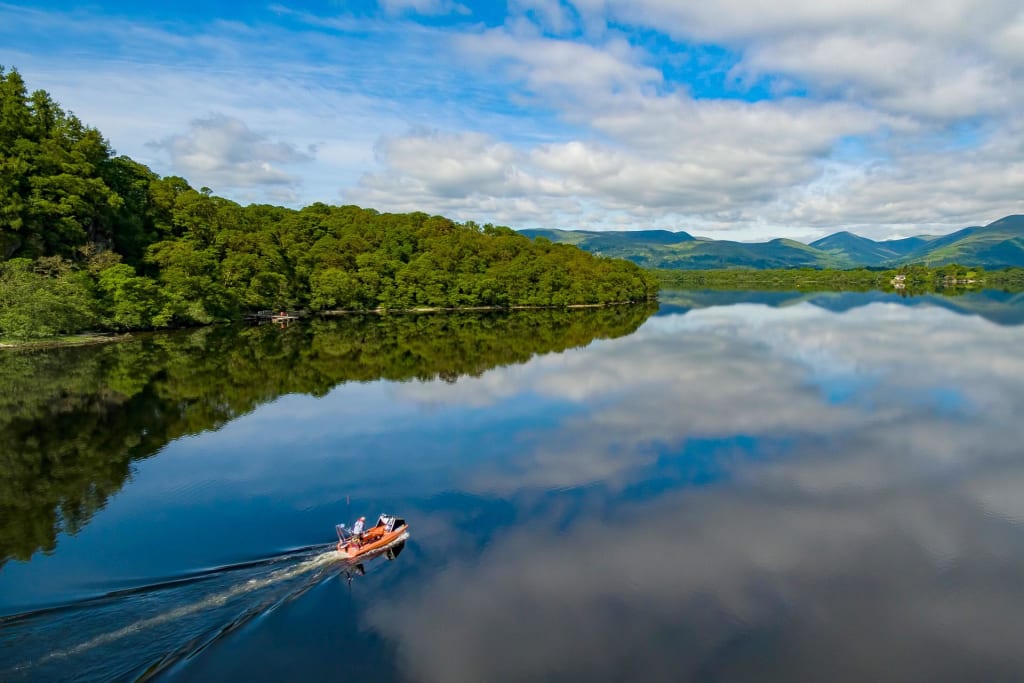Southern Scotland: some natural wonders
Most of these reflect the region's violent geological history

Scotland abounds with natural wonders. Here are brief introductions to some of those to be found south of the highlands.
Loch Lomond
This freshwater loch, famed for its “bonny bonny banks”, is 24 miles long, 27 square miles in extent, and marks the point where Highland and Lowland Scotland meet.
Geologically, this region is known as the Highland Border Complex where an ancient mountain range collided with lowlands composed of Devonian rocks, with a mixture of marine sediments thrown in. It is possible to see the corresponding fault line, running across several of the islands in the loch, from the summit of nearby Conic Hill.
Loch Lomond and its surrounds are very rich in wildlife, this being a sanctuary for many over-wintering wildfowl such as Greenland white-fronted geese. Over a quarter of all native British plant species can be found here.
There are many islands in the loch, most of which are privately owned, but access can be had to the nature reserves on Inchcailloch, Bucinch and Ceardach.
Arthur’s Seat
The area that is now Edinburgh, the capital city of Scotland, is the result of extremely violent volcanic activity in the distant past. Arthur’s Seat and nearby Salisbury Crags are prominences that were created when a volcano erupted some 335 million years ago.
The summit of Arthur’s Seat, 820 feet high, offers a stiff climb that is rewarded by magnificent views over Edinburgh and the surrounding area. There is evidence of occupation by people during the Bronze and Iron Ages, thus demonstrating the strategic importance of the area in past times.
Traprain and North Berwick Laws
“Law” simply means “hill”, these two being in East Lothian. They stand prominently above the surrounding countryside, Traprain Law being 734 feet high and North Berwick Law 613 feet high.
They are all that is left of ancient volcanoes.
Traprain Law, to the east of Haddington, was a fortified site during the Iron Age and may well have been occupied since the Stone Age. It is the largest hill fort in Scotland.
North Berwick Law overlooks the small coastal town of that name, and quarrying of the hill provided the red basalt stone that can be seen in many local buildings. From the top there are splendid views of the Firth of Forth, Edinburgh and the Lammermuir Hills. At the summit is an arch made from the jawbone of a whale.
St Abb’s Head
This headland in Berwickshire is of great interest both to naturalists and geologists, as well as offering superb sea and coastal views.
There is evidence here of the continental collision, around 400 million years ago, that joined what is now northern Scotland to the rest of Great Britain.
This is one of the largest seabird breeding colonies in Europe, and the birds to be seen here in huge numbers include razorbills, shags, puffins and fulmars. St Abb’s Head was established as a National Nature Reserve in 1983 and is looked after by the National Trust for Scotland.
The area has been occupied for at least 3,000 years and it was the site of an early Christian community. The ruins of a 7th century monastery, founded by St Ebbe, can still be traced on the cliff edge.
Bass Rock
This is the most prominent of four islands in the Firth of Forth close to the shore near North Berwick. It is volcanic in origin, being the plug of a volcano that emerged in the Carboniferous Era around 300 million years ago.
It rises from the sea to about 350 feet, with sheer cliffs on three sides and a more gentle slope on the fourth. A castle was built here in the early 15th century and a lighthouse in 1903.
The rock has world importance due to the fact that up to 800,000 gannets nest on its cliffs. It is home to about 10% of the world’s North Atlantic gannets. The gannet’s scientific name – Morus bassana – derives from its presence on Bass Rock.
Boat trips can be taken to the Rock from North Berwick, and visitors are likely to see grey seals swimming near the Rock as well as vast numbers of gannets during the breeding season.
About the Creator
John Welford
I am a retired librarian, having spent most of my career in academic and industrial libraries.
I write on a number of subjects and also write stories as a member of the "Hinckley Scribblers".






Comments
There are no comments for this story
Be the first to respond and start the conversation.